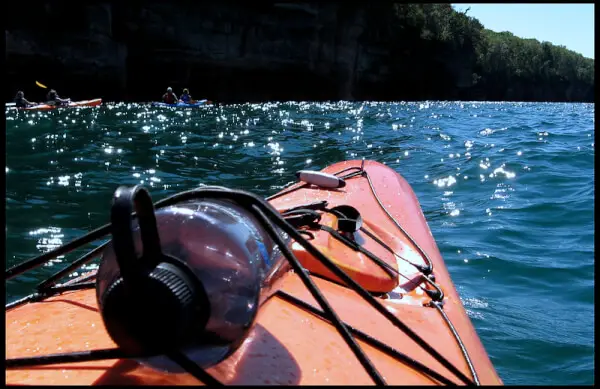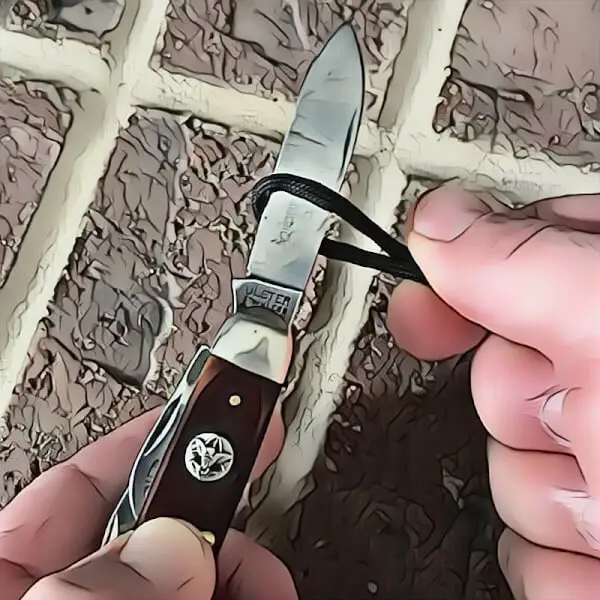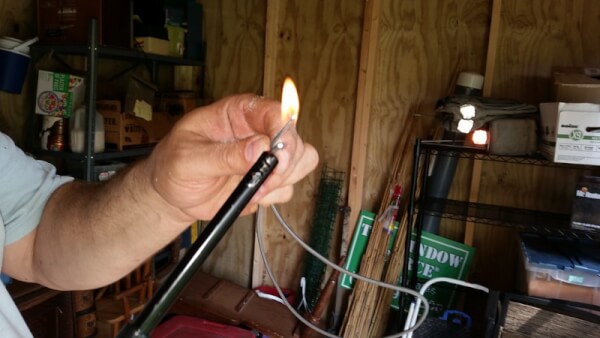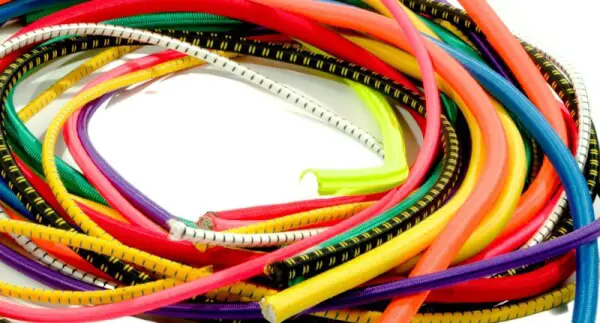If you’ve been starting to spend time around people that are into hiking and backpacking, then you may have heard the term shock cord. If you’re wondering what it is, then this article is for you. In this post, we will cover what shock cord is and some facts you should know about it.
What Does Shock Cord Do?
First thing’s first, what is shock cord and what is shock cord used for?
Shock cord is commonly used for securing loads. Great examples of this are securing roll mats to a backpack or general equipment to a hiking cart. The elasticity in shock cord allows for loads to be secured and removed with relative ease without having to manage knots.
Recommended Reading: If you’re wondering what a hiking cart is, then you might find our article on what hiking carts are of interest.
Is Shock Cord The Same As Paracord?
While very similar, shock cord and paracord two different products. While paracord is made from fibers that do not stretch, shock cord is made up of stretchy elastic, similar to bungee cords
Paracord is better for where you need something secured down in a way that won’t allow it to easily be removed without undoing the paracord.
Shock cord is better for where you need something secured down in a way that you can easily get it out without having to undo the cord.

How Much Does Shock Cord Stretch?
So we know that shock cord is similar to paracord except that it can stretch. But the question is, how much can we stretch our shock cord?
Almost all shock cords can stretch up to 200% of their original length, a full double! The max stretch length is limited by the outer material of the stretch cord, which helps to ensure that the shock cord does not become damaged or over-stretch, risking it snapping.
While it would be possible for manufacturers to produce shock cord that stretched considerably more than 200% they are having to create an appropriate compromise between stretch length and durability/longevity.
How Long Does Shock Cord Last?
Everything that we have for hiking has a useful lifetime and shock cord is no different, but how long is that?
If you store your shock cord properly then it should last up to 5 years. However, this can be affected by how frequently it is used and the conditions it is stored in. For example, storing shock cord somewhere that gets very hot can result in the elastic fibers becoming brittle.
it is also worth remembering that the more frequently

Should Shock Cord Be Stored Stretch?
When you’re considering how long shock cord will last the condition you store it in will play a major factor.
Shock cord should not be stored stretched wherever possible. It will likely start to permanently take on that length and lose its elasticity by storing it stretched. Where possible, you should be storing shock cord unstretched in a cool environment.
While the likelihood of the shock cord deforming and staying stretched will happen even if you’re leaving it on something permanently such as a kayak but the effort of removing it will likely outweigh the benefit of removing it between trips.
How Strong Is Shock Cord?
While it varies based on diameter and materials as a rough guide, 1/8 inch shock cord can hold up to 100lbs and 1/2 inch up to 450lbs. This is substantially less than paracord, which can normally support 550lbs but they each serve different purposes.
While paracord focuses on being able to securely hold down gear without any give, shock cord is specifically designed to stretch, this is why a comparable size of shock core will hold significantly less than paracord.
What Is Shock Cord Made Of?
The stretchiness and longevity of shock cord comes down to the materials that shock cord is made up of. So what is the most common materials for shock cord to be made of?
Shock cord is made up of two parts, the core and the jacket. The core will tend to be made of one or many strands of rubber; this is what provides the stretchiness of the shock cord. The jacket will tend to be made of a material like nylon; this protects the rubber from damage to help it last longer.
The elastic core of a shock cord can be made of a single strand or many braided strands of rubber. While a single solid strand will provide better strength by itself, any damage to it can result in the shock cord being unusable. In contrast, shock cord that uses many braided strands can handle multiple of the strands being broken before it is rendered unusable.

The jacket’s purpose in shock cord is to protect the elastic core. While you may not think that it is necessary to protect the core, even small amounts of damage to the elastic core can result in it being able to stretch without breaking.
Another type of protection that the core requires that you may not have thought about is protection from UV rays. UV is particularly harmful to rubber, causing it to become brittle and crack.
Can You Cut Shock Cord?
Yes, you can cut shock cord. Wherever possible you should look to cut shock cord by folding it in half and then using a knife or another sharp instrument to cut the cord. By doing it like this you can prevent the elastic strands from retreating in the jacket.

Is Shock Cord The Same As Bungee Cord?
If you’ve been reading through this and thinking that shock cord sounds a lot like bungee cord, you wouldn’t be far wrong.
Shock cord and bungee cord are extremely similar. The main difference between shock cord and bungee cord is how the cord is terminated. Bungee cord tends to be terminated with some a metal/plastic hook. Shock cock tends not to be terminated with anything, allowing the user to decide how to use it.
What Is Shock Cord Hem?
One of the most common uses for shock cord is the use in securing down tarpaulin over items that you don’t want to get wet. A shock cord hem is where a material such as a tarpaulin has a channel created around the edge by folding the edge back on itself; shock cord is then passed through this channel.
By having shock cord running through a hem on a tarpaulin it allows for the edges of the tarpaulin to be pulled in around the base, helping to prevent it from blowing off in the wind.
An alternative approach to achieving the same is by having a tarpaulin that has loopholes through it. This allows for those loops to be used to hold the tarpaulin down over the items. However, this will increase the weight of the tarpaulin and introduce points where the tarpaulin is more likely to rip.
How To Fuse Shock Cord?
Fusing of shock cord is where you heat up the ends of shock cord to cause the rubber to melt and ‘fuse’ together. This may be something that you want to do for a number of reasons, including tidying up cut shock cord, and connecting two pieces of shock cord together.
Fusing shock cord works by utilizing a heat source, such as a lighter, heat gun, or even just the heat from your campfire. Ideally you should let the end of the shock cord heat up until you start to see the different strands starting to melt into a single blob of rubber.
It is likely that you’ll end up getting a small flame start at the tip. This will mean the end is probably melted enough, you should blow out the flame and leave the end to cool.
If you’re looking to fuse two shock cords together then once you have got the ends of the shock cord melted then you’ll want to touch the tips together and let them cool down. This will give you a strong connection between the two shock cords, however, it will still be a weak point compared with the rest of the cord and will not stretch at that point.
It is worth keeping in mind when doing this that as you are causing the rubber and jacket to melt, it is advisable to fuse your shock cord outside or in a well ventilated area. This is because when you heat up the end of the shock cord, chemicals within the

How To Add Shock Cord To Backpack?
If you’re interested in carrying additional items such as sleeping pad
If you have wet and muddy items then it’s useful to be able to attach them to the outside of your pack rather than having to put them inside and risk getting your stuff inside dirty
If you’re more of a visual person, then the below video is a great example of how you can add shock cord to your backpack to allow you to lash items to it.








